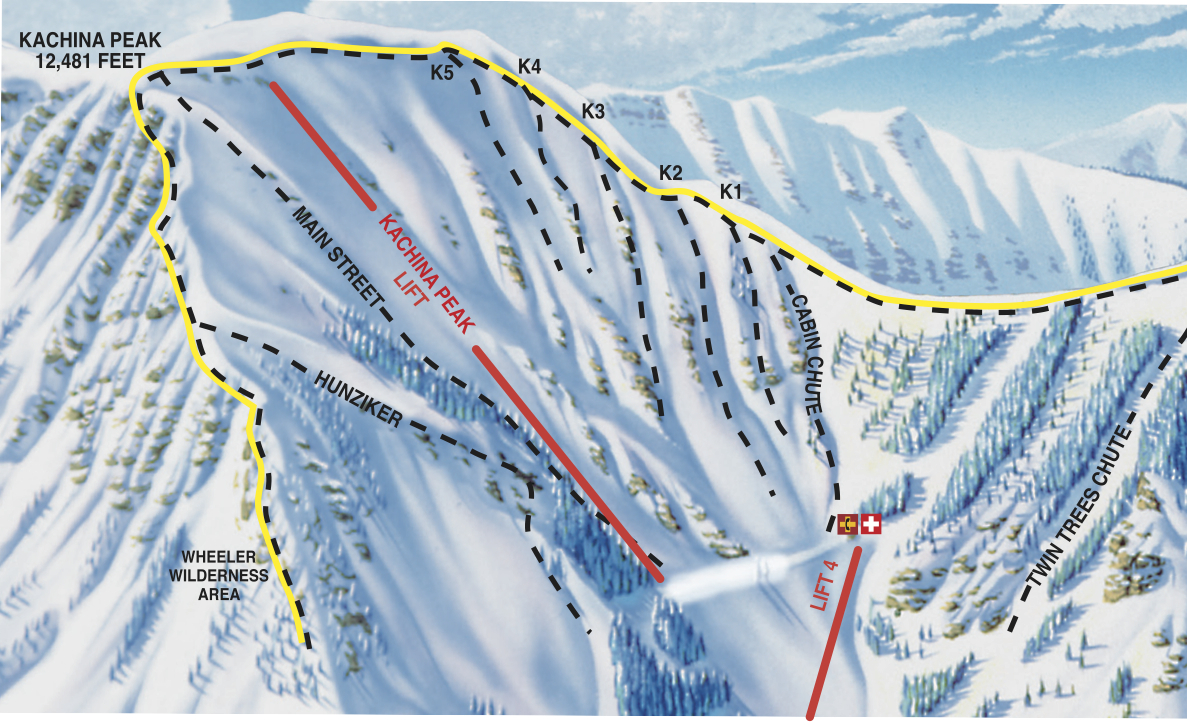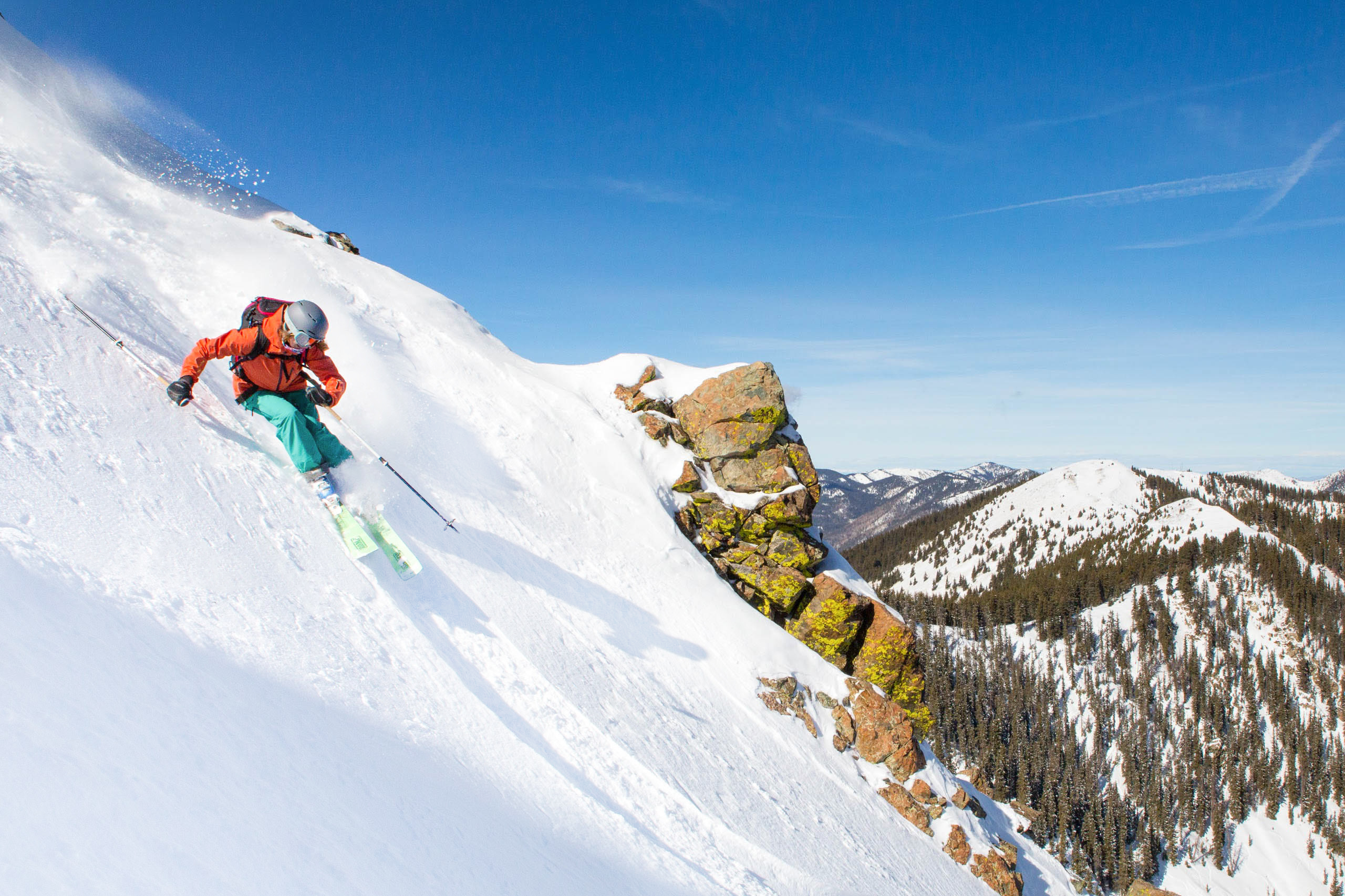Welcome to the gnarliest inbounds terrain in North America


I’m in the base of the bowl, absorbing the full range of gnarly chutes streaking from Kachina Peak at Taos Ski Valley, New Mexico. Sixty years ago, Taos was founded by Ernie Blake, who fled Nazi persecution in 1938. A lift to Kachina Peak was part of his dream. In 2015, it is finally a reality. The morning hike of nearly an hour, starting at 3600m, is no longer necessary. From now on, when Kachina is open, you can do all the chutes in a day. The new fixed-grip triple chair tops out nine vertical metres from the summit, increasing the mountain’s advanced and expert lift-served terrain by 50%.

Previously I hiked Kachina along Highline Ridge from Lift 2, climbing more than 200m from the col above Cabin Chute. To my left, the K chutes, 1 through to 4, got longer as we climbed. I trusted my buddy was correct that there were alternative ways down.
That day, the Ks each had a cornice needing mandatory air, some quick turns and then the brakes on before the chute narrowed, hemmed in by brutally rocky spines – definitely not couloirs to be rag-dolling it. We reached the prayer flags on the 3804m summit cairn for amazing close-up views of New Mexico’s highest point, Wheeler Peak.
Ignoring well-tracked Main Street, which is the sole option down from the Peak for a really strong intermediate at 36º, we moved on right to the Hunziker runs, the treed side of the Kachina Bowl, and chose the Chute. Dog Leg, with its 2m choke, is even steeper. The entry had enough rocks for my breakfast to consider a reappearance, but once committed, the north-facing ribbon of pow was untracked and sublime.
Variants on Chutes K1 to K4 are tackled annually in late February by Salomon Extreme Freeride World Tour competitors. Kachina is a four-star mountain face for this event. The freeride competitors find countless routes through unforgiving rocks and trees, finding lines that sane humanity would never contemplate.
Even without Kachina Bowl, Taos still has arguably more serious hike-to terrain inbounds than any other North American resort. In fact when Ernie Blake was building the place, experts told him Taos Ski Valley could never be made to work because the terrain is too steep.
The three ridges, Highline, Tresckow and West Basin, total two miles of moderate hiking, with scores of long adrenalin shots of every variety to drop into. This year, Taos Ski Valley has added new terrain by opening up Wild West glade, beyond West Basin Ridge.
At 1294 acres, Taos is just over half the inbounds size of Jackson Hole but with much less competition for lines and a completely different European alpine meets American south-west cultural vibe.
On mountain, the Snowsports Weeks for all levels and in-bounds guiding traditions are unique in North America. The terrain is 51% advanced and expert and everyone benefits from experiencing it with someone who knows this mountain intimately.
Some visitors choose to stay 20 miles away in Taos Town, lower at 2134m. This is an incredible contrast, offering enough arts, culture and restaurants to satisfy, for six days, any non-skiing partner who is pissed off not only with wintersports, but all the usual resort activities associated with them.
I found decent budget lodging at Super 8, two miles south of Taos Town. Out of holiday peaks, a town centre room for two such as Historic Taos Inn or Hotel La Fonda can be £100 a night.
The easiest direct route is British Airways to Denver. Overnighting around Colorado Springs can ease the 308-mile drive, which takes five hours in clear conditions.
On the return, visit Wolf Creek, which has the biggest annual average snowfall in Colorado at 460 inches. It’s a pow pocket with limited vert but lots of untracked. Stay at Pagosa Springs, by a natural spa.